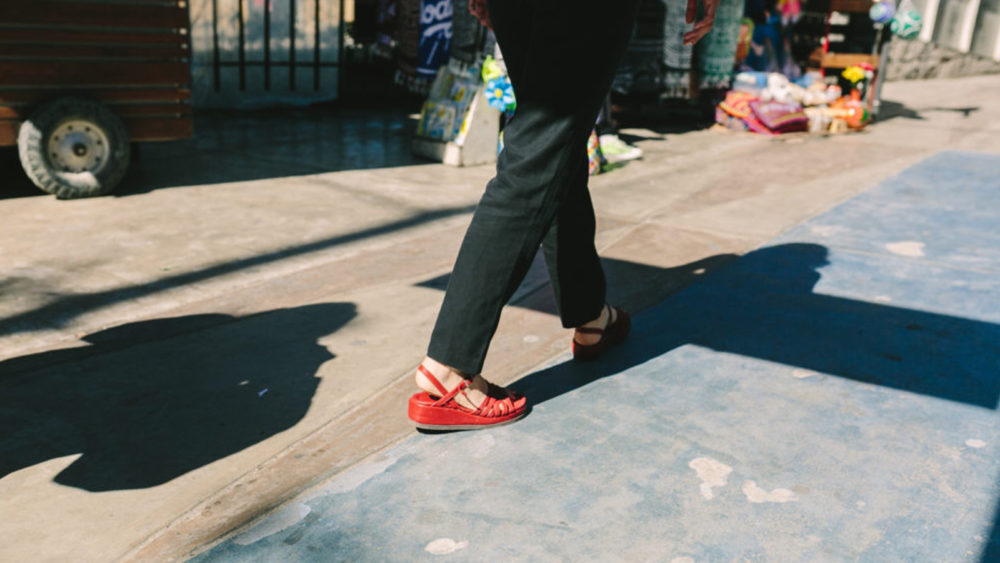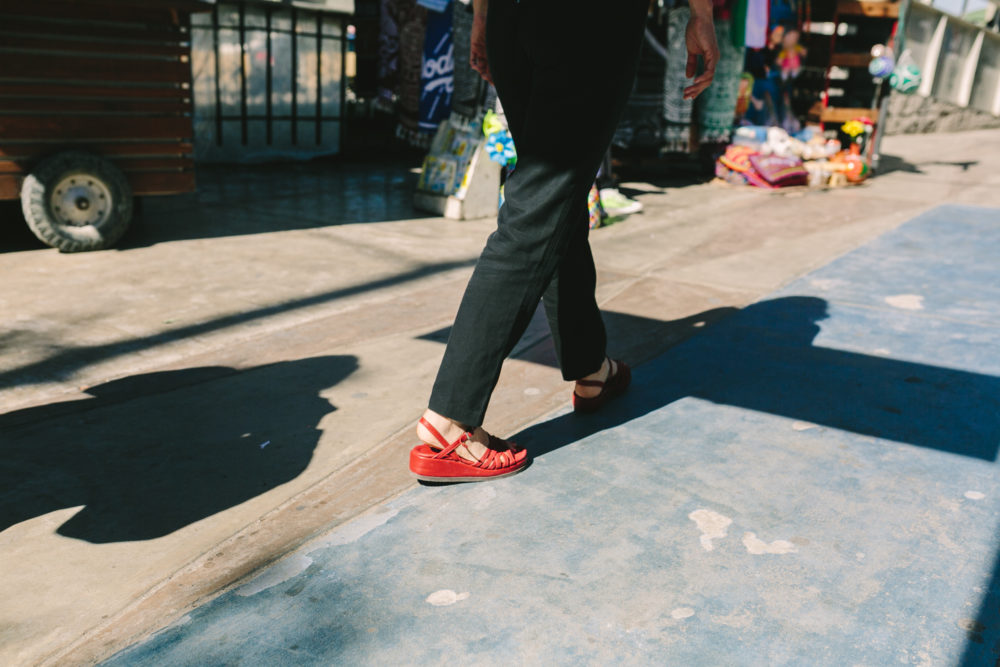Salvador de la Torre: antes muerta que sencilla


Salvador de la Torre
antes muerta que sencilla
May 4 – July 14, 2019
Opening Reception: Sat., May 4 from 7-10pm
In December of 2017, artist Salvador de la Torre overheard a conversation between their mother and niece. Their niece was interviewing the artist’s mother in regards to her migration story and how she ended up living in the United States.
It is a story the artist knows well. Salvador describes their mother as a storyteller, one who always shares stories, about her struggles raising seven kids, and bringing them to live in the United States for a better life and future. There was one detail that stood out during this telling. The artist’s mother, during the interview, mentioned that when she crossed the border in Tijuana using a â“coyote,â” she did so in red heels. The artist was in disbelief and inquired if their mother had known what she was getting herself into in terms of the crossing. Her mother responded â“pues si,â” but the heels were not that high and that she wanted to look â“guapaâ” for the artist’s dad who had crossed prior and was waiting for her â“en el otro lado.â”
Salvador was fascinated with their mother’s story and journey, not being able to fully comprehend what their mother went through crossing the border, in the middle of the night, running through treacherous territory, in heels. It is a risky and potentially deadly situation, and in all that, their mother still factored in the male gaze and how she wanted to present herself as attractive for the artist’s father – even though the shoes got ruin running across dry soil, navigating brush, and traversing water.
Upon hearing the story, the artist asked htheir mother to describe the shoes, and to their surprise, their mother remembered them, almost 40 years later, in vivid detail. As the artist and their mother share the same shoe size, the artist often borrows their mother’s shoes, they pictured the shoes in their mind and on their own feet. The artist sketched a drawing of the shoes a red colored pencil, as they sat with their mother who described in detail – wedges, not heels, not super high, how they wrapped and straddled the heel, the latch, and how the eight straps interlaced the front of the shoe.
Using that sketch, the artist decided to create a replica of the shoes using cardboard, paper mache, and chicken wire, which they would wear to cross the border in a performance action to â“recreateâ” their mother’s story and honor her sacrifice. To quote the artist, â“I have citizenship status and decided to cross the border through legal points of entry, which is something that I’m very familiar with, as I grew up on the border and crossed back and forth thousands of times.â” Through the initial border crossing in Tijuana, their replica red paper mache shoes got ruined. Exploring new possibilities, the artist decided to get in contact with a shoemaker and get a new pair professionally made. In collaboration with El Salvadoran immigrant, Fito Vasquez from Fito’s Shoe Repair in Pico Union, a professional replica of the red wedges was created, which were used to again cross the border in Tijuana.
Deciding to further explore the breadth of the border and their family history, the artist expanded their crossing locations beyond Tijuana, performing to cross at every point of entry that is significant to her mother and family migration story. They crossed in El Paso, where in 1991 their family had an immigration appointment in Ciudad Juarez to become residents after a twelve year of wait in Mexico. It was that location where, as a family, they crossed the border for the first time with their green cards. The artists third and final performative action for the project took place in Laredo, Texas, where the family made a crossing in 1994 to settle in that community and pursue the â“American Dream,â” so the artist, their brothers, and sister could go to university and have a better economic future.
Inspired by that initial interview and conversation between their mother and niece, artist Salvador de la Torre premieres their exhibition antes muerta que sencilla, a series of performances, photographs, and drawings that document histories, struggles, risk, connection, love, dreams, and family.
ABOUT THE ARTIST
Salvador de la Torre is an artist and educator, born in Guadalajara Jalisco, raised in Laredo, Texas and currently resides in Long Beach, CA. De la Torre earned a Master of Fine Art from California State University, Fullerton and a Bachelor of Art from Texas A&M International University. The artist has exhibited in and around Southern California, Texas, Georgia, Tijuana, Taiwan, and Berlin. They have been invited to speak at a TED X Conference in Laredo Texas, at Washington State University, Eastern Washington University, and Georgia State University Athens.